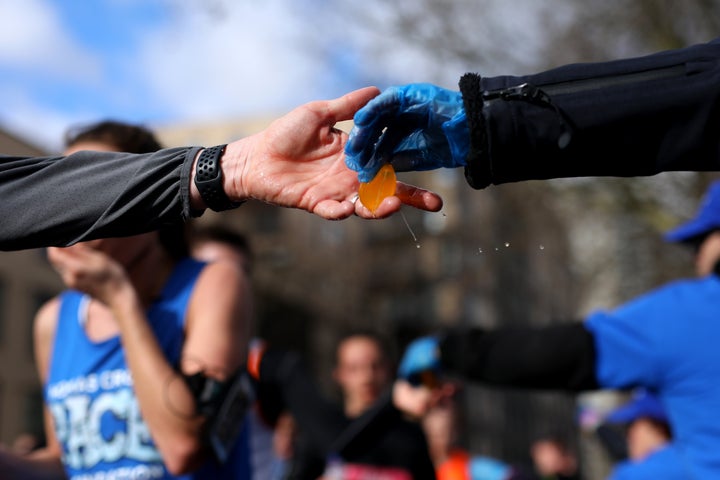Although world leaders are trying to find large-scale solutions to the climate crisis at the UN’s climate conference COP26, some inventors have already taken matters into their hands.
These are the top eight creative inventions which could limit how humans damage the environment.
1. The Ocean Cleanup
What is it? A 62-mile underwater, V-shaped barrier designed to trap plastic waste floating through the ocean, currently being trialled on the Great Pacific Garbage Patch.
How it could help: According to its inventors, the device could remove half of the waste from the Great Pacific Garbage Patch within 10 years.
The non-profit also aspires to clean up 90% of floating ocean plastic pollution as well as tackling river pollution before it reaches the ocean.
2. A robotic bee
What is it? This is a drone based on the world’s most important pollinators, bees. With wings which beat 17 times per second, these robots can fly in any direction, and flip 360 degrees around. They can travel up to 15mph and can be fitted with spatial sensors so they can move independently from plant to plant – but they weight 29g, and can only fly for six minutes at a time.
How it could help: While this is an invention expected to be rolled out en masse only in the event of an insect apocalypse, there have been growing concerns over a dwindling bee population and the knock-on effects it could have for the entire ecosystem.
As researcher on the Delft University of Technology project, Matej Karasek, told The Guardian in 2018: “The use we see for this is pollination in green houses. The bee is under threat due to our farming methods and we don’t know what their future will be.”
3. Packaging, but biodegradable
What is it? Notpla – the same company who gave you the edible water pods Ooho – are trialling completely biodegradable packaging which is also water proof and green proof with Just Eat in London.
How it could help: Their packaging solutions are made from seaweed and plants – they want to use algae packing as a substitute for cardboard boxes, so it will biodegrade in a matter of weeks.

4. Charcoal from human waste
What is it? A Kenyan company has created fuel from human waste – so, poo – but it’s odourless.
The charcoal is created through carbonisation, after collecting the waste and letting it dry out in a greenhouse for two weeks.
The waste is mixed with sawdust before being placed in a kiln and heated at 700 degrees Celsius.
How it could help: The invention improves sanitation in the local area and means trees do not have to be burnt to create charcoal.
5. Mr Trash Wheel
What is it? A semi-autonomous waste interceptor based in ’Baltimore, US, usually placed at the end of a river. Powered by the sun and the current of the river, hundreds of tons of rubbish are collected through the device every year as water flows through it.
How it could help: The device has already collected almost 1.5 million plastic bottles, 1.3 million foam containers, 12.4 cigarette butts and 832,000 plastic bags. At the moment, the waste is incinerated to create electricity but the company plans to recycle the rubbish collected.
6. Water-filtering powder, PolyGlu
What is it? A powder created from fermented soybeans which mixes with dirt and pollutants in water, making the dirt in the liquid sink to the bottom. One gram of the powder can treat up to five litres of polluted water.
How it could help: Natural disasters such as floods, tsunamis and earthquakes have polluted water sources all around the world. As the world continues to heat up, disruption to weather patterns are likely to continue – so an easy method to clean your water supply could be a lifeline.
7. A bin but for water
What is it? A “trash-skimmer” unit designed to be placed in harbours and similar bodies of water without currents, the seabin intercepts floating debris, micro and macro plastics and even micro fibres.
Water is sucked in from the surface of the bin, passing out a catch bag before being pumped back into the sea. It can also be equipped with oil absorbent pads to suck in surface oils, detergents and other pollutants.
How it could help: The seabin project has already captured more than 2 million kilograms of waste to date through its 860 seabins dotted around the world. Marine litter is growing and posing a significant threat to sea life, especially when micro plastics are eaten.

8. Plastic-eating super enzymes
What is it? A super-enzyme created from plastic-eating bugs, found in Japan in 2016, which breaks down plastic six times faster than previously thought. Although the enzyme is still being perfected in the lab, it is expected to have great potential.
How it could help: This could help enable the full recycling of bottles, and if combined with enzymes which break down cotton, scientists believe the combination means mixed-fabric clothing could be broken down, and recycled.